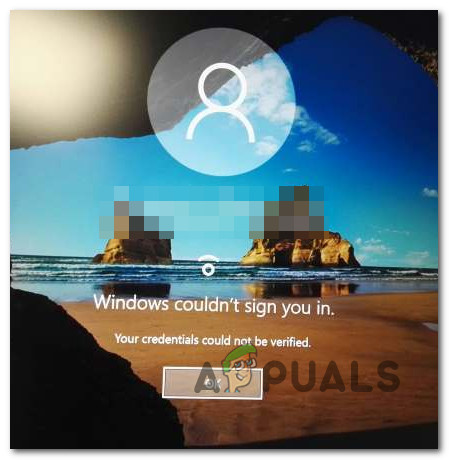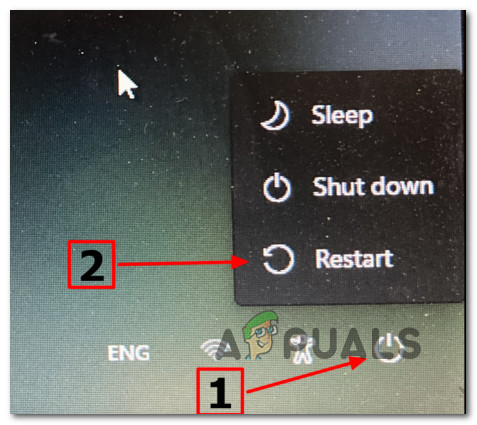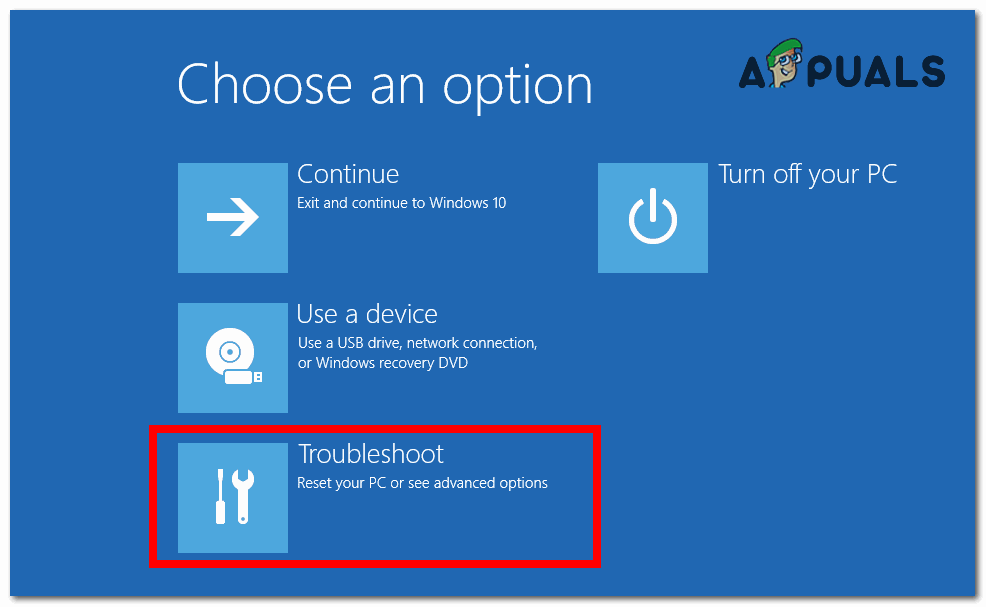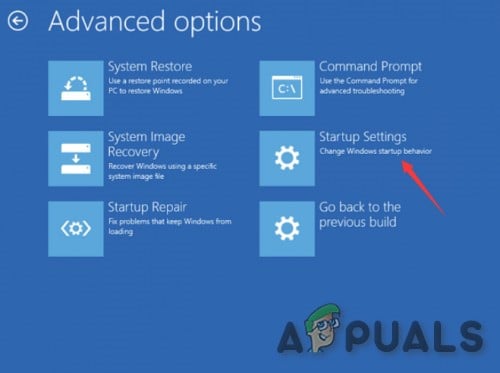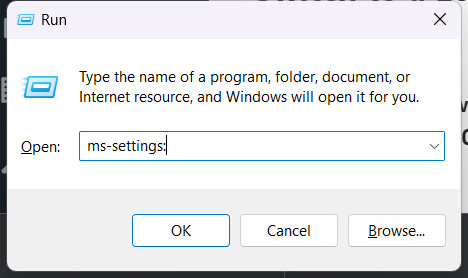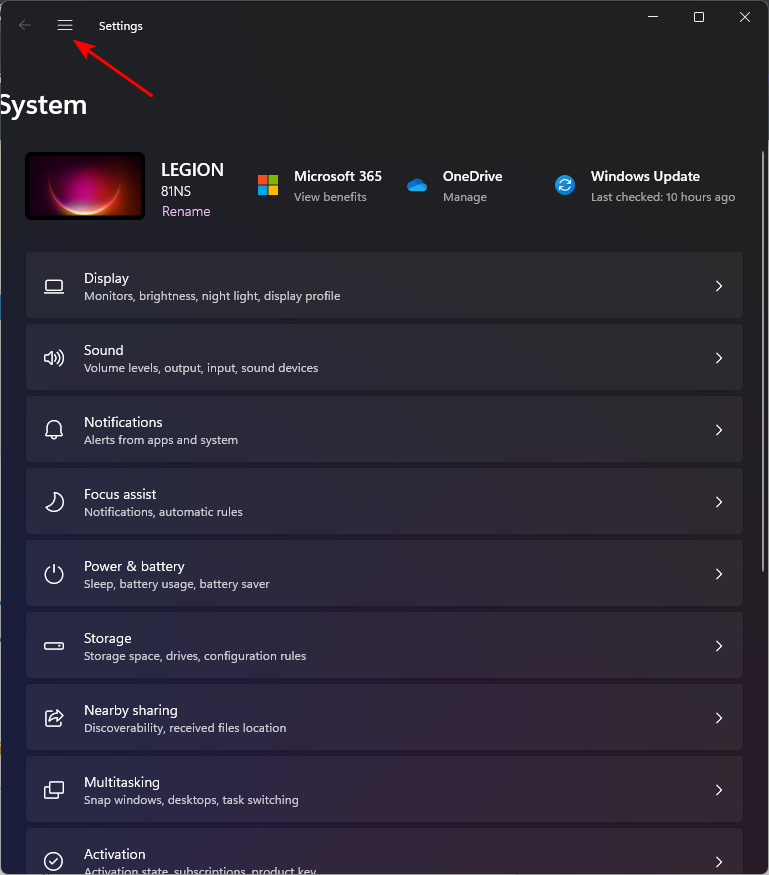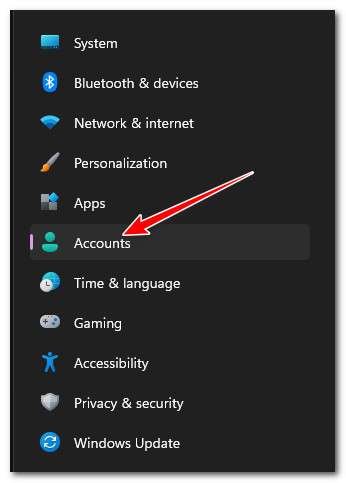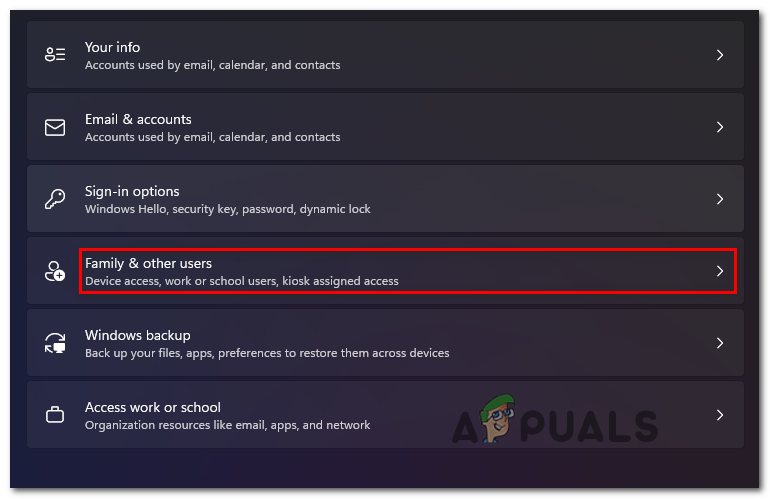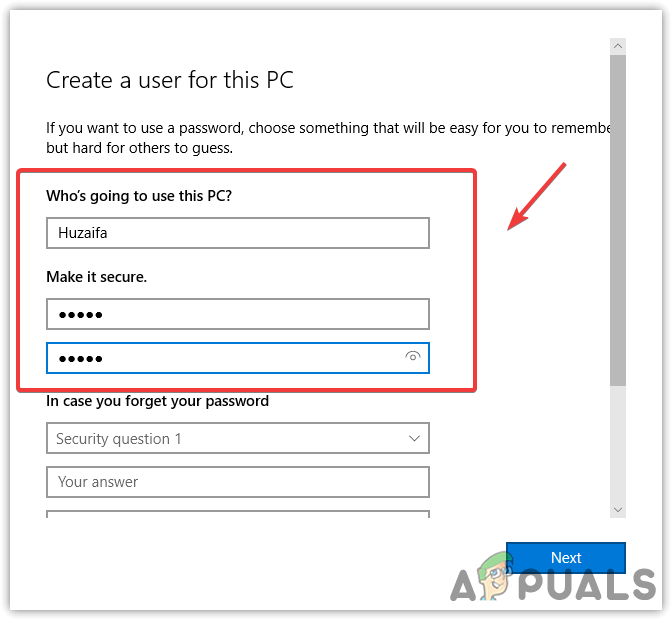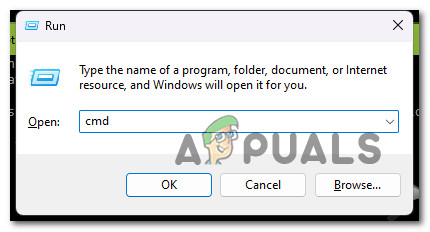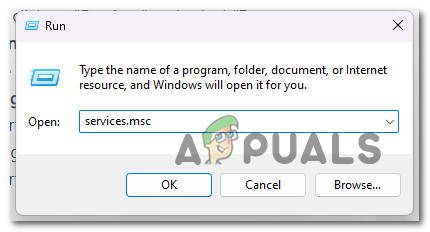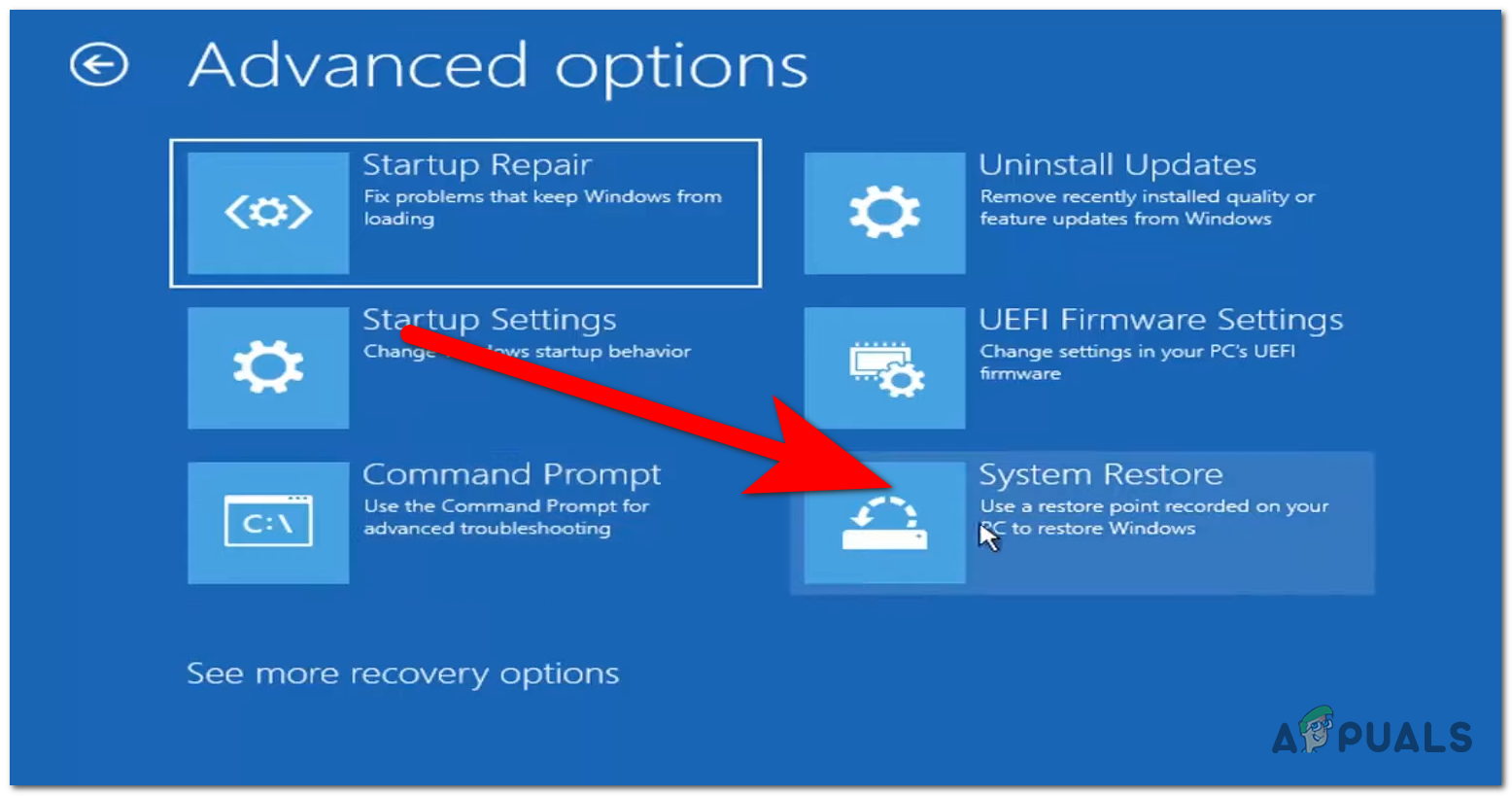After investigating this issue, it turns out that there are several different scenarios that might directly or indirectly be causing the problem. Here’s a list of culprits that you should be aware of:
1. Reset the PIN in Safe Mode
It turns out that one of the situations, where this issue will arise most frequently, is when the PIN that is currently connected to your account is actually incorrect. You’ll need to restart your computer in Safe Mode and change the PIN linked to your account in order to fix this issue. Booting in Safe Mode is essential if you end up going for this repair method since it’s the only way you will be permitted to get past the login screen. Note: If you have a backup password and are able to sign in to Windows 11 successfully, you may then go inside the Sign-in Options menu (under Accounts) and create a new PIN. Here’s what you need to do to boot in Safe mode and reset the PIN that is currently triggering the ‘Your Credentials Could Not Be Verified’ error: If the same type of issue is still occurring, move down to the next method below.
2. Switch to a Local administrator account
It turns out that you can also encounter this issue if the Microsoft account that is currently being used during the sign-up process is affected by a bug specific to Windows 11. You might try temporarily switching to a local account to fix this issue. Of course, in order to be able to do this, you will first need to boot in Safe Mode in order to get past the login screen. The good news is that several users that used to deal with this same problem have confirmed that the problem is now resolved. Follow the instructions below to boot your PC in Safe Mode and make the witch to a local administrator account: If this method didn’t allow you to fix the problem, move down to the next method below.
3. Reset the ACLs on the NGC Folder
When the Access Control Lists (ACLs) connected to the NGC folder are corrupt, your Windows machine can also be unable to access your login information. In this situation, resetting the entire ACL component through an elevated Command Prompt will fix the problem. Several Windows 11 have confirmed that once they reset all the ACLs for the NGC folder, they were finally able to make the PIN work again. Note: In order to follow this method, you will need to boot in safe mode. Follow the instructions below to reset the ACLs of the NGC folder and fix the ‘Your Credentials Could Not Be Verified’ error: If the same kind of issue is still occurring, move down to the next method below.
4. Granting the necessary permissions on the NGC folder
Another situation that is frequently cited as producing this issue, according to some affected customers, is when the NCG folder lacks the permissions necessary to get the login information. In this instance, you can fix the issue by changing the NCG folder’s permissions. There are a lot of affected users confirming that altering the permissions finally allowed them to log in with their previously established PIN without getting the same ‘Your Credentials Could Not Be Verified‘ error. Follow the instructions below to grant the necessary permissions to the NGC folder: After giving yourself complete control, you should assess the situation. By now, it ought to be resolved. If the same problem is still occurring, move down to the next method below.
5. Clear the NGC folder
Inconsistent data found in the NCG folder is another potential offender that could be the source of this kind of folder. This problem can be resolved by manually finding the NGC folder’s location and emptying it before restarting your computer. There is a ton of information about Windows Hello PIN setting in the NGC folder. If the corrupted files in this folder are the cause of your issue, all you need to do is empty the NGC folder. Your operating system will be forced to produce fresh, healthy files as a result, which won’t have the same issue. Note: Information pertaining to the current sign-in options on your PC, such as PIN, password, and retina, as well as any other sign-in method, is kept in the NGC folder. But bear in mind that you will need to boot in Safe Mode (without networking) and remove the NGC folder’s contents in order to enforce this procedure. For detailed instructions on how to do this, go to the list below: Continue to the method below in the event that the issue is still not resolved.
6. Change the Behaviour of Credential Manager to Automatic
When the Credential Manager service is set to Manual, one situation that prevents your PC from retrieving login data occurs. A number of impacted users have stated that switching this service’s behavior to Automatic helped them address their problems. Several affected users have confirmed that once they did this, they we’re finally able to log in without experiencing the same ‘Your Credentials Could Not Be Verified’ error. Important: You can only follow this method if you boot in Safe Mode first. Here’s how to do this: If the problem is still not fixed, move down to the next method below.
7. Deploy DISM and SFC scans
If you’ve reached this step without finding a solution, your Windows computer probably has some kind of system file corruption with a login component. Launching SFC (System File Checker) and DISM (Deployment Image Servicing and Management), two built-in tools that can handle the most typical causes of system file corruption, should be the next step. Note: Despite the fact that SFC and DISM are nearly identical, resolving the corruption issue is more likely if they are executed immediately after one another. It should be noted that DISM receives files from Windows Update in order to replace corrupt counterparts, but SFC gathers healthy system files from a local location. You may check for system file corruption by running an SFC scan from an elevated CMD prompt. It is best to continue with this process even if the tool seems to have frozen in mid-use (or prematurely quit the CMD window). After the transaction is complete, you will finally receive the success notification. Restarting your computer will end the DISM scan. Run a DISM scan after the subsequent startup has finished. IMPORTANT: Verify your Internet connection’s strength before beginning this step. After correctly completing the DISM command, restart your computer to verify if the issue has been resolved. Continue to the method below in the event that the issue is still not resolved.
8. Use System Restore
This tool allows you to restore your entire Windows installation to a stable state where the problem never occurred in order to fix significant errors. Your operating system must have previously taken a snapshot that can be used to roll back the Windows installation to a previous time in order to employ this remedy, though. However, Windows should be set up to frequently save System Restore Snapshots if you haven’t changed the default behavior (after every installed Windows update). Important: Be warned that this approach would essentially reverse any changes made after the snapshot was first created before attempting it. After the snapshot was taken, any user preferences, game downloads, or software installations will be gone. Use the following instructions to see how to restore your system if you decide to do so: Continue to the next method below if your computer still won’t allow you to get past the initial login screen.
9. Perform a clean install or repair install
The only option left for you if none of the aforementioned methods have worked for you is to completely replace all of the affected system file dependencies with healthy substitutes. Your only options at this stage are to carry out a clean install or a repair install (in-place upgrade). If you have the choice, we urge you to choose an in-place update (repair installation) if you run into trouble:
Repair install (in-place upgrade) – During a repair install, only the system files will be modified (while keeping your personal files, user preferences apps & games).Clean install – This option may be the best if only a few kernel processes are affected, but it has the drawback of erasing all user data from the OS disk. You should be warned, though, that if you do this, all of your personal information will be deleted.
[FIX] MAC Invalid Node Structure Error (Could Not Be Verified Completely)[FIX] Thunderbird Configuration Could not Be VerifiedFix: The Timestamp Signature and/or Certificate could not be Verified or is…Fix: “Oops! We could not find matching credentials” Error on Snapchat
